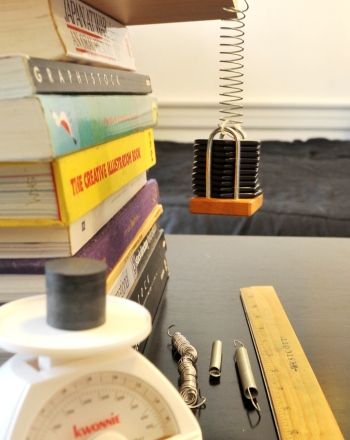
Cargando...
Zer egin dezaket?
226539 materialEducativo
textoFiltroFichatipo de documento Fisika - Esperimentua/Praktika
Baliabide honi buruz...

Forces cause objects to move or deform in some way. Newton’s third law states that for every force, there is an equal and opposite force. This is true for springs, which store and use mechanical energy to do work.Springs are elastic, which means after they are deformed (when they are being stressed or compressed), they return to their original shape. Springs are in many objects we use on a daily basis. They in ball point pens, mattresses, trampolines, and absorb shock in our bikes and cars. According to the Third Law of Motion, the harder your pull on a spring, the harder it pulls back. Springs obey Hooke’s Law, discovered by Robert Hooke in the 17th century. Hooke’s law is described by:F = -kxWhere F is the force exerted on the spring in Newtons (N),
It is an educational content by education.com.
By clicking on the title of this resource, you will be redirected to the content. If you want to download the project, you just have to join the website, which now is for FREE.
Kide hauentzat bakarrik:

Mira un ejemplo de lo que te pierdes
Autores:
Kategoriak:
Etiketak:
Fecha publicación: 12.5.2016
Baliabidearen jatorrizko lizentzia errespetatzen da.
Aipatu nahi al duzu? Erregistratu o Hasi saioa
Didactalia-ri Gehitzea Arrastra el botón a la barra de marcadores del navegador y comparte tus contenidos preferidos. Más info...
Aipatu
0